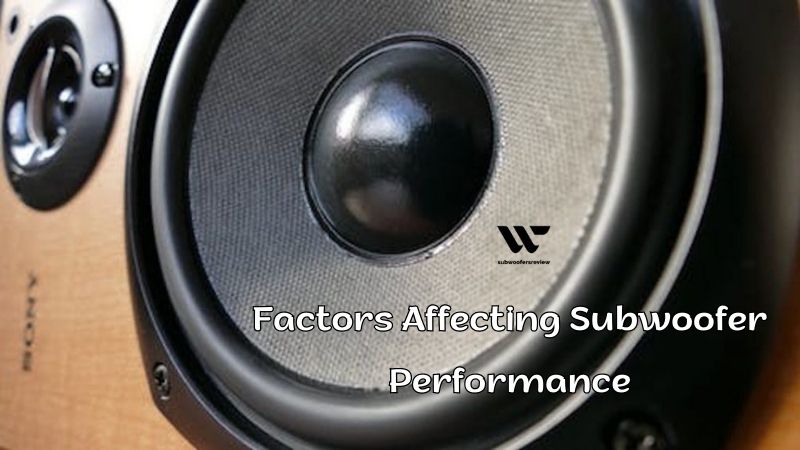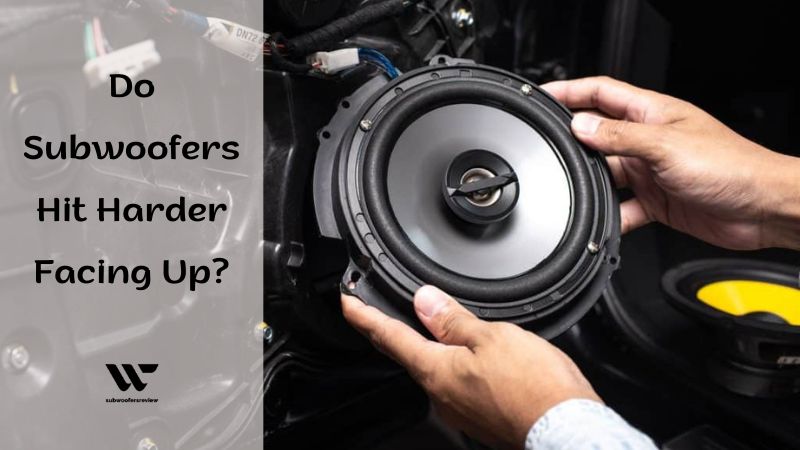Subwoofers have become an essential component of any audio system, delivering that much-needed bass that can elevate the listening experience to a whole new level. But when it comes to positioning your subwoofer, there’s often a debate about whether facing it up or down makes a difference in the intensity of the bass impact. So, do subwoofers hit harder facing up?
In this blog, subwoofersreview will explore the various factors that come into play when deciding the orientation of your subwoofer and unravel whether facing up truly makes the subwoofers hit harder. So, let’s dive into the world of sound and find out the truth behind this popular question.
Factors Affecting Subwoofer Performance
The acoustics of the space, the positioning of the speakers, their power handling capabilities, volume controls, the kind and caliber of the subwoofers, the sensitivity of the speakers, and the crossover settings are just a few variables that can affect the performance of the subwoofers. Your subwoofer can be tuned for the greatest performance by taking into account these aspects.
Kind of Subwoofer:
A subwoofer can be either sealed, ported, or band-pass, and each style produces a different sound. You can choose the ideal subwoofer for your needs by being aware of the benefits and drawbacks of each subwoofer type.
Quality of the subwoofer: The performance of your subwoofer can be significantly impacted by its quality. A high-quality subwoofer will create clearer, more accurate sound, whereas a low-quality subwoofer could create duller, less precise sound.
Sensitive speaker: The subwoofer’s sensitivity dictates how well it transforms energy into sound. While a subwoofer with a lower sensitivity will require more power to create the same level of sound, one with a higher sensitivity will be able to produce more sound with the same amount of power.
Cross positioning: The frequency range that your subwoofer will reproduce depends on the crossover setting. A lower crossover setting will enable the subwoofer to play more low frequency sounds, but a higher crossover setting will limit the amount of low frequency sounds it can play.
Placing the speaker: The subwoofer’s performance can be significantly impacted by where you place it in the space. The subwoofer should ideally be positioned at an angle or close to a wall to improve bass response.
Room acoustics: The sound of a subwoofer can be influenced by the room’s shape, size, and furnishings. Generally speaking, subwoofer performance will be greater in larger spaces with high ceilings and few fixtures.
Energy management: The amount of power a subwoofer can handle without sound distortion depends on its power handling. If your subwoofer is strong, you might want to turn down the level to prevent harm to your subwoofer or other speakers.
Volume controls: Performance of your subwoofer can be significantly impacted by its volume settings. When the level is too high or too low, the subwoofer might distort the music and produce weak, faint bass.

Do Subwoofers Hit Harder Facing Up?
A subwoofer’s sound frequency is dependent on a number of variables. The subwoofer’s placement should be carefully considered. Some claim that mounting the subwoofer with its up position improves its performance. Others feel that the best course of action is to confront it. However, after researching both, we can advise which is ideal for you. Let’s see below now.
Subwoofer with an upward facing: Imagine yourself in a room with a subwoofer on the floor and the driver positioned in the middle of the ceiling. It will have different results. The subwoofer’s bass produces upward-directed sound waves that reflect off the ceiling. The waves are then visible all throughout the space. Direct sound and reflected sound waves together result in more immersive bass.
Downward Subwoofer: The subwoofer should be mounted pointing down, which may seem odd to some people but has benefits. The sound waves will reach the ground when the subwoofer is pointed at the floor and disperse in all directions. This technique is known as “floor coupling”. As a result of reflections off of walls, floors, and other surfaces, bass is dispersed equally throughout the listening space, preventing any potential dead zones.
You may also like: What Subwoofer Hits the Hardest?
Subwoofers are frequently said to sound better when they are looking up. The subwoofer has greater room to move and spread out in this position. The sound waves can travel farther and be heard by more individuals in your listening surroundings when the subwoofer is positioned with its face upward. The size/shape of your room or car trunk, as well as the typology you’re employing, will ultimately determine how it performs because those factors may call for different orientations.
Its actual performance isn’t significantly impacted by whether it’s up or down. The subwoofer’s omnidirectional dispersion of sound waves makes sure that the low frequencies equally fill the room. The performance of the subwoofer is mostly dependent on its design, quality, and positioning within the listening area.
Despite the fact that it might not really matter where the subwoofer is pointed. The location in the room has a significant impact on how well it performs. The subwoofer might be placed in the right or wrong spot at different times. It could make listening to audio frustrating. Select the ideal location in the room for the subwoofer to have the greatest effect.
Winding Up
In conclusion, the orientation of subwoofers has a significant impact on the perceived “hardness” of the bass. While subwoofers facing up can produce a more omnidirectional sound and enhance low-frequency effects, they may not necessarily hit harder in terms of sheer impact. Factors such as room acoustics, subwoofer placement, and personal preference also play a crucial role in determining the overall bass experience. Ultimately, it is important to experiment with different positioning options and consider individual listening preferences to achieve the desired impact and enjoyment from subwoofers.

